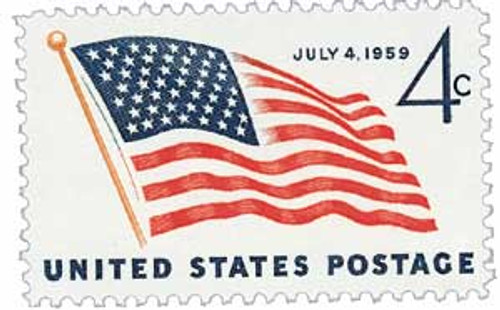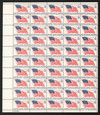
1959 4c 49 Star U.S. Flag
# 1132 - 1959 4c 49 Star U.S. Flag
$0.35 - $18.50
U.S. #1132
1959 4¢ 49-Star U.S. Flag
Issue Date: July 4, 1959
City: Auburn, New York
Quantity: 209,170,000
Printed By: Bureau of Engraving and Printing
Printing Method: Giori Press
Perforations: 11
Color: Ocher, dark blue, and deep carmine
U.S. #1132 was issued on July 4, 1959 the day the U.S. flag with 49 stars debuted. The addition of Alaska as the 49th state prompted the design change. By federal law, stars representing new states are officially added to the U.S. flag on the Fourth of July following the admission of those states.
U.S. #1132
1959 4¢ 49-Star U.S. Flag
Issue Date: July 4, 1959
City: Auburn, New York
Quantity: 209,170,000
Printed By: Bureau of Engraving and Printing
Printing Method: Giori Press
Perforations: 11
Color: Ocher, dark blue, and deep carmine
U.S. #1132 was issued on July 4, 1959 the day the U.S. flag with 49 stars debuted. The addition of Alaska as the 49th state prompted the design change. By federal law, stars representing new states are officially added to the U.S. flag on the Fourth of July following the admission of those states.










